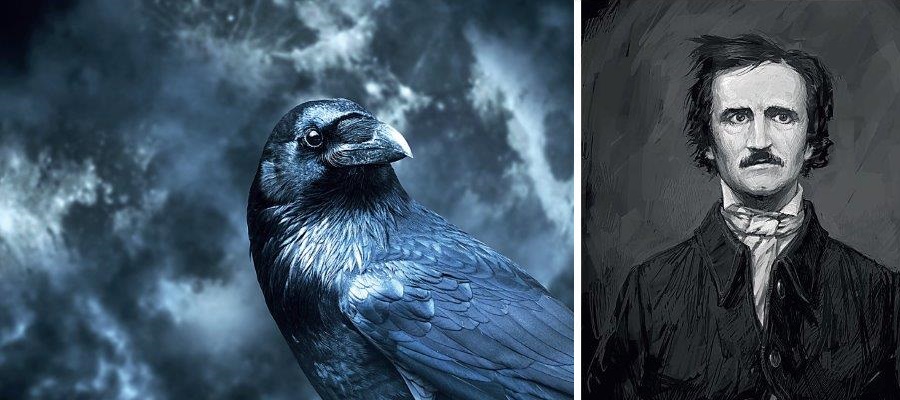No American writer has been as mysterious and strange as Edgar Allan Poe. And no other English-speaking writer has produced writings as mysterious, scary, disgusting, horrifying, and yet beautiful as him…
To tell the whole life story of this man we would need at least three Friendship pages (which we won’t risk, don’t worry!) However, there are several interesting facts from his life that determined1 his works.
He lost his parents at a very early age and was brought up by a rich couple who never formally adopted him. Young Edgar didn’t get on with his foster2 parents, especially because he spent their money on gambling and alcohol. He didn’t finish his university studies and tried various jobs. He started writing poetry and short stories too. When he was 26, he got a license to marry his cousin who was 13 at the time. She died 11 years later, leaving Poe as a desperate alcoholic. One day he was found delirious on the city street and was rushed to the hospital where he died a couple of days later. Nobody ever found out what had happened to him as the clothes he was wearing were not his own…
Edgar Allan Poe often wrote about death, madness, sorrow3, and suffering. His best fiction works are all Gothic. He is considered the inventor of the detective fiction genre and even influenced authors like Arthur Conan Doyle.
His ever famous poem The Raven became the inspiration for film making too. He was a master of short stories and the best ones include The Black Cat, The Fall of the House of Usher, and The Murders in the Rue Morgue, and The Mask of the Red Death.
Once upon a midnight dreary, while
I pondered, weak and weary,
Over many a quaint and curious
volume of forgotten lore,–
While I nodded, gently napping,
suddenly there came a tapping,
As of someone gently rapping,
rapping at my chamber door.
“ ‚Tis some visitor,“ I muttered,
„tapping at my chamber door;
-! Only this, and nothing more.“
Now read to the excerpt of one of Poe’s famous short stories and decide whether the statements 01-06 are T true or F false.
THE MASK OF THE RED DEATH by Edgar Allan Poe
The Red Death had long been feeding on the country. No sickness had ever been so deadly — so great a killer — or so fearful to see. Blood was its mark — the redness and the horror of blood. There were sharp pains, and a sudden feeling that the mind was rushing in circles inside the head. Then there was bleeding through the skin, though it was not cut or broken — and then, death! The bright red spots upon the body and especially upon the face of the sick man made other men turn away from him, afraid to try to help. And the sickness lasted, from the beginning to the end, no more than half an hour.
But Prospero, the ruler of that land, was happy and strong and wise. When half the people of his land had died, he called to him a thousand healthy, happy friends, and with them went far away to live in one of his palaces. This was a large and beautiful stone building he had planned himself. A strong, high wall circled it. This wall had gates of iron. The gentlemen, after they had entered, brought fire to heat the iron of the gates to make them close so firmly that nobody could open them. Here they could forget the sickness, the Red Death. They would leave the outside world to care for itself.
Prospero had supplied everything they needed for pleasure.
There was music, there was dancing, there was beauty, there was food to eat and wine to drink. All these were within the wall, and within the wall they would be safe. Outside the wall walked the Red Death.
01 The Red Death affected both human body and mind. T/F
02 A sick person died of bleeding through deep cuts in the skin. T/F
03 The suffering was quick – it didn’t take more than 30 minutes. T/F
04 Prospero invited his friends to live with him in his only palace. T/F
05 Prospero and his friends sealed the gates to be safe inside. T/F
06 Prospero supplied the outside world with food because he cared. T/F
Miroslava Dubanová
Vocabulary:1 určovať – určovat; 2 pestún – pěstoun; 3 smútok – smutek

